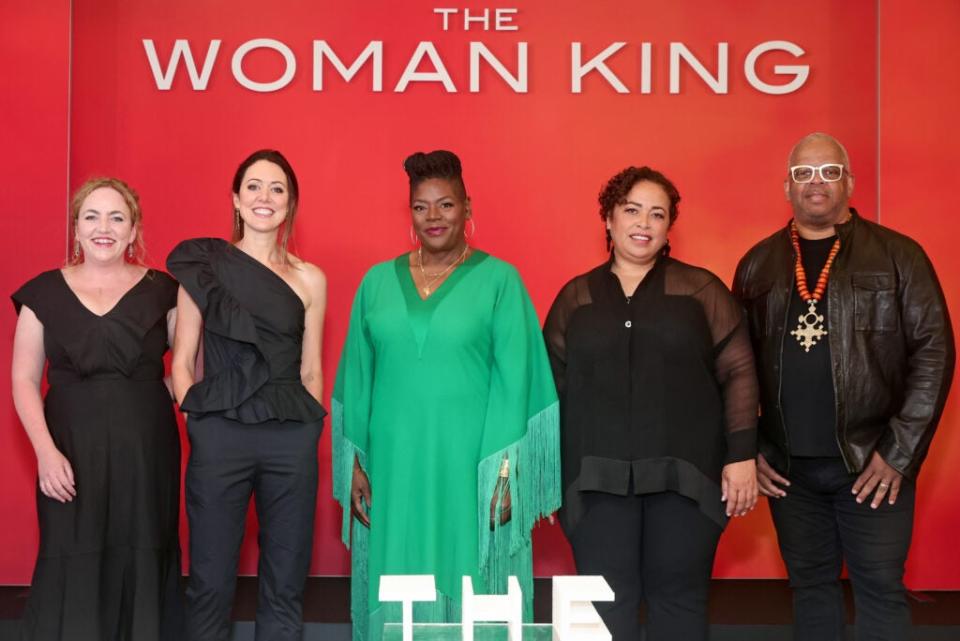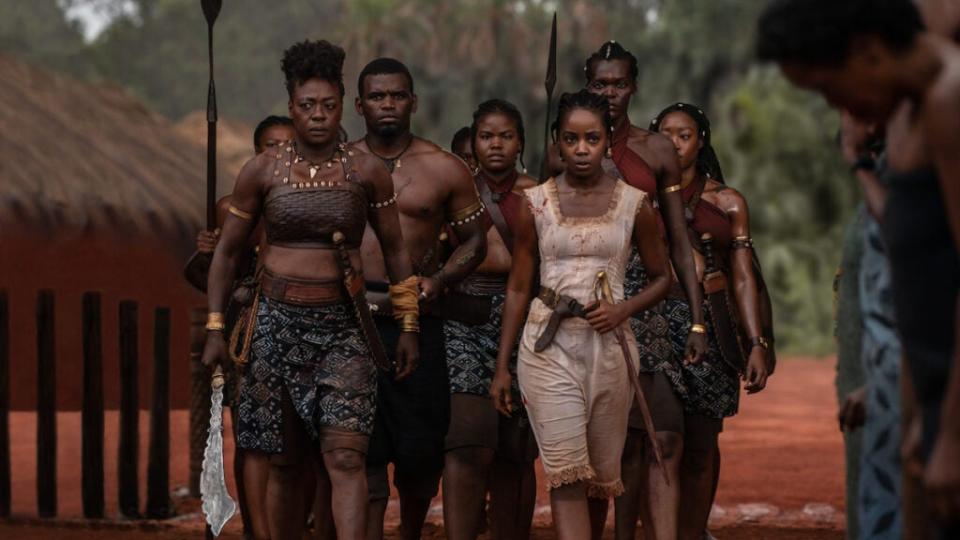How ‘The Woman King’ Cinematographer Fought to Highlight the ‘Beauty of Black Skin’
There is a long history of Black actors and faces being over or underexposed on screen, a combination of how cameras and celluloid have been geared toward whiteness over Black skin. But “The Woman King” as a historical epic with a largely Black and female cast is a movie that challenges many norms, and it was important to cinematographer Polly Morgan that this film truly highlight “the beauty of Black skin.”
Morgan, who recently has served as the director of photography on both “Where the Crawdads Sing” and “A Quiet Place Part 2,” among others, told TheWrap that she and “The Woman King” director Gina Prince-Bythewood wanted to keep a couple of things top of mind. First, she needed to capture the striking red earth hues of the African nation of Dahomey in the 18th century. But more importantly, she wanted the film’s stars to look beautiful, natural and for the African setting to compliment their bodies, portraying the film’s Agojie warriors in a way audiences haven’t seen before.
“I just wanted to make sure that the contrast between the very powerful and dominant color of this red earth was going to work well with their skin tones,” Morgan told TheWrap. “[Prince-Bythewood] didn’t really say to me how to do it or what she likes. She just said, ‘Look, I want the world to see how beautiful black skin is. I want to show these women off and all of their strengths and all of their vulnerability.'”
Also Read:
How ‘The Woman King’ Can Turn Strong $19 Million Launch Into a Long Box Office Run

Morgan wanted to make “The Woman King” resemble a David Attenborough BBC documentary, where the color looks real but is also rich in detail. Of course, doing that with “The Woman King” in particular posed its own challenges. Morgan had to make sure there was enough color contrast between the actors’ skin tones and the amber hues from the red earth all around them, and that became even harder in “the heat of the African sun.”
“That red hue is bouncing around all over the place. It introduces a red tone to the skin, just like if you were putting someone against a green screen and you put too much light on the green screen and then the green light reflects back on people,” Morgan explained. “It was always on my mind to just make sure that the skin tones felt very natural, and we just kept the red spill off them in the daytime when the sun was high.”
But Morgan also utilized fire light and “flame bars” or other practical fire units close to the actors such that everyone was being lit by real sources that all “reflect beautifully off their skin.” It’s something that could help make the moment appear natural whether it was within daylight or in the moonlit nighttime fight sequences, such as the visceral combat and ambush scene that opens the film. For an added wrinkle, the real Agojie warriors were known to have put oil on their skin and faces before battle, as did the actresses, making them additionally glossy and luminous. So Morgan then did additional screen tests to see just how the light would reflect off their oiled bodies during those fight sequences.
“I just really use my usual technique, which is I want to create shape and modeling, and I want it to feel dynamic and interesting. And I also want my actors to look beautiful,” Morgan said. “But there’s this fine balance about making somebody look beautiful but also making it connectable to the viewer as a real experience and not just this glossy Hollywood image.”
Also Read:
Viola Davis on the Long Journey of ‘The Woman King': ‘To Finally Get It Made…Was Close to a Miracle’

In that sense, Morgan is well aware of how Black actors by the very nature of celluloid have historically been overexposed or underexposed on screen. She recalled stories from the ’50s of Black actors having gigantic, hot lights shone upon them, causing them to sweat, or even examples of Black actors having Vaseline rubbed upon their skin in order to reflect the light properly. And though Prince-Bythewood didn’t share any particular films as models for how she wanted “The Woman King” to look, she did point Morgan in the direction of some films that didn’t get it right and left darker skin tones underexposed.
More significantly, just as Morgan had to be conscious of the differences of lighting Black skin versus light skin, the hair and makeup teams on “The Woman King” or other below-the-line crew members also understood the nuances of working with Black hair or skin compared to white hair and skin. Morgan explained that culture that was established on set can be seen in the care and attention to detail on screen.
“On this movie, Gina hired [heads of department] that can help the women feel comfortable. When they were on set, they could feel completely free and could be vulnerable to just let themselves go because they felt supported by the people around them about people that understood them,” Morgan said.
“The Woman King” is in theaters now.
Also Read:
‘Atlanta,’ ‘Barry’ and Other Emmy-Nominated TV Cinematographers Discuss the Bold New Look of Comedy

 Yahoo Movies
Yahoo Movies 
